Not all dogs are angels indoors. Some have a talent for chaos, a knack for mischief, and a seemingly endless reservoir of energy that can test even the most patient owner. If you’ve ever returned home to shredded pillows, chewed shoes, or a puddle in the middle of the living room, you know exactly what we mean.
Certain dog breeds have reputations for indoor antics that are as frustrating as they are endearing. But the truth is, “bad behavior” often comes from high energy, intelligence, or independence—it’s not about malice.
Understanding which breeds are more prone to indoor mischief can save your furniture, your sanity, and even your relationship with your pup. From clever escape artists to persistent chewers, these dogs keep life interesting, though sometimes stressful.
We’ll reveal the worst-behaved dog breeds, uncovering why they act the way they do and offering insights on how to manage their antics. Whether you’re looking for tips or just a laugh, knowing what you’re signing up for can make all the difference.
Quick Tip: Some dogs have high energy and strong prey drives, making them challenging for indoor living. Experts suggest that daily mental stimulation and structured play can reduce destructive behavior in these breeds.
Worst Behaved Indoor Dog Breeds
1. American Pit Bull Terrier
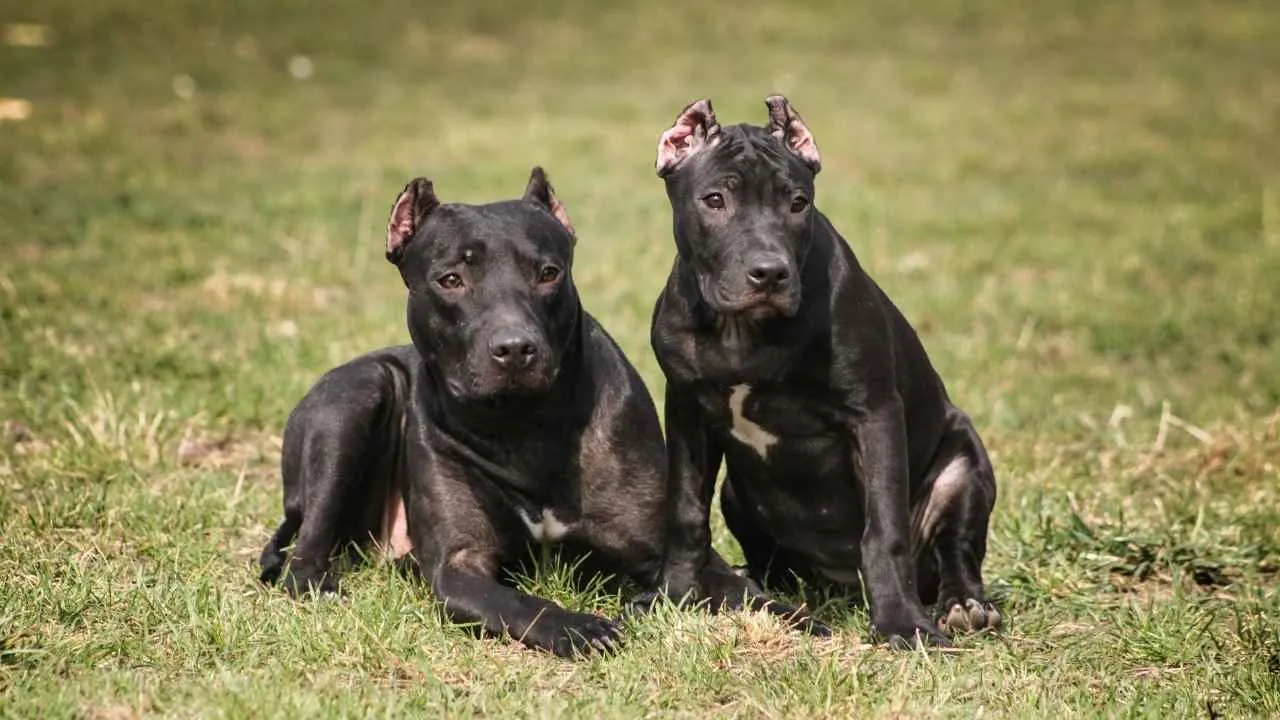
Ah, the American Pit Bull Terrier — the misunderstood bad boy of the dog world. Pit Bulls are a smart, strong, and endlessly energetic breed, which makes them a challenge for anyone expecting a calm, low-maintenance lap dog.
This breed often gets a rough reputation, but the truth is, they’re not bad dogs — they’re just bad at being bored. Leave a Pit Bull alone in your apartment with nothing but a chew toy and your favorite pair of shoes, and you’ll quickly learn what “creative destruction” really means.
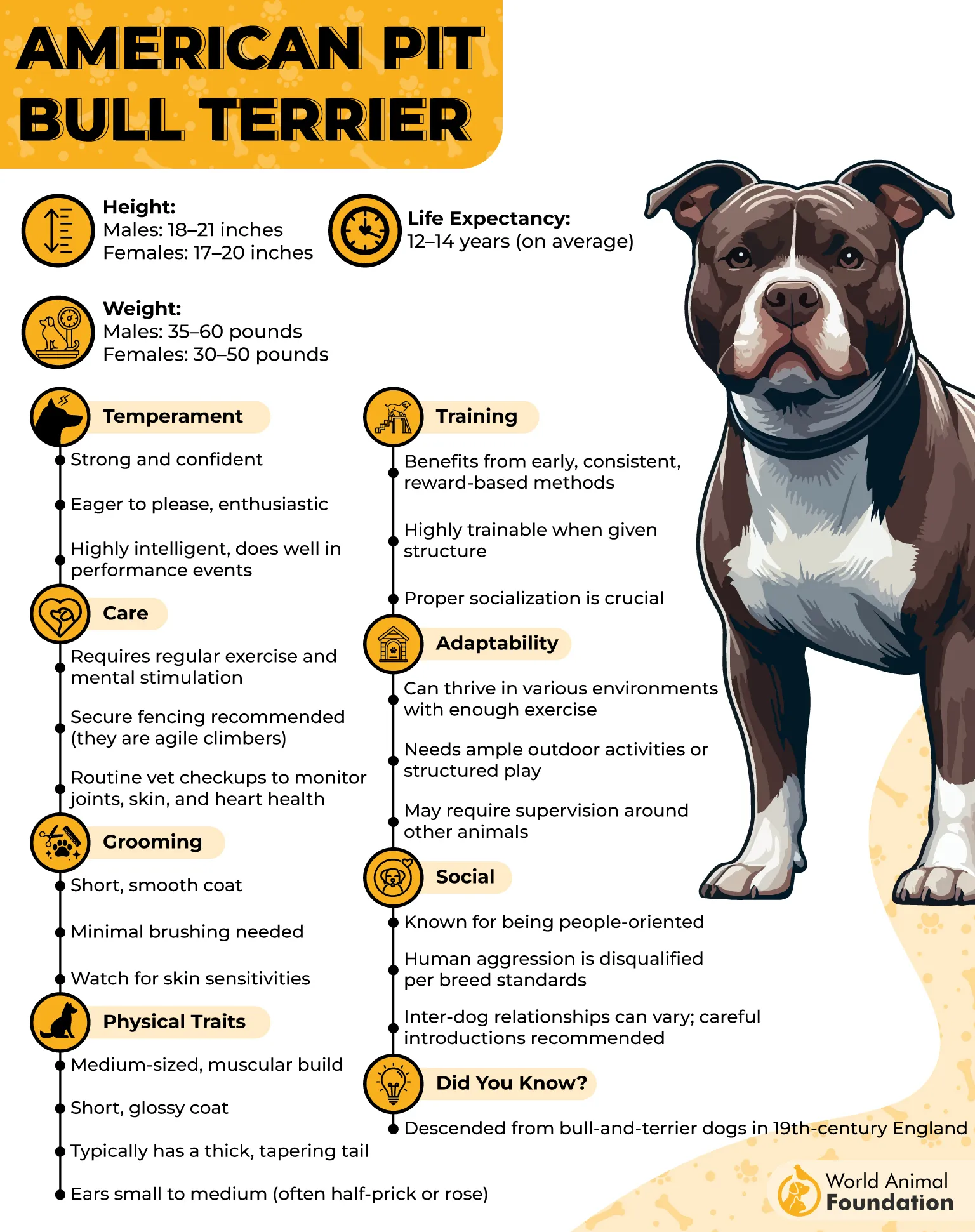
Despite the chaos, it’s hard not to love their goofy, incredibly affectionate personalities. These dogs have hearts as big as their muscles and genuinely just want to be with their people 24/7. The problem? They sometimes express that love a little… too enthusiastically. Expect face kisses, zoomies at lightning speed, and the occasional full-body tackle that’s meant as a hug.
Boundless energy: Needs constant exercise — or your home becomes a racetrack.
Too smart for their own good: Boredom leads to mischief.
Strong and determined: Once they set their mind on something (like the trash can), good luck stopping them.
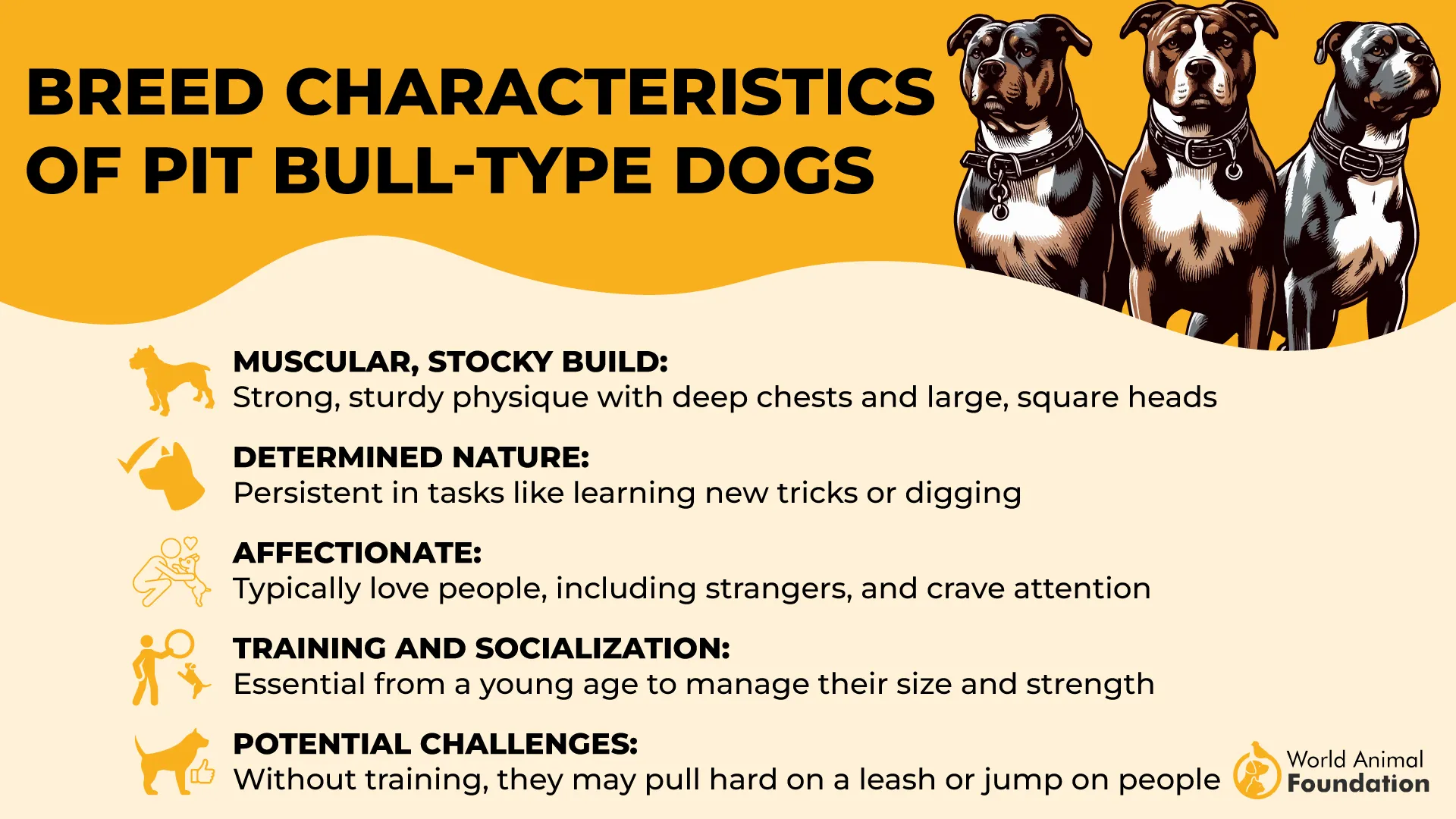
They crave constant stimulation, both mental and physical. Without it, they’ll find their own entertainment — like redecorating your living room with couch stuffing or turning your throw pillows into confetti.
In truth, a well-trained, well-exercised Pit Bull is an absolute joy — loyal, protective, and endlessly fun. But for the unprepared or faint of heart, this breed can turn peaceful indoor living into a full-contact sport.
2. Siberian Husky
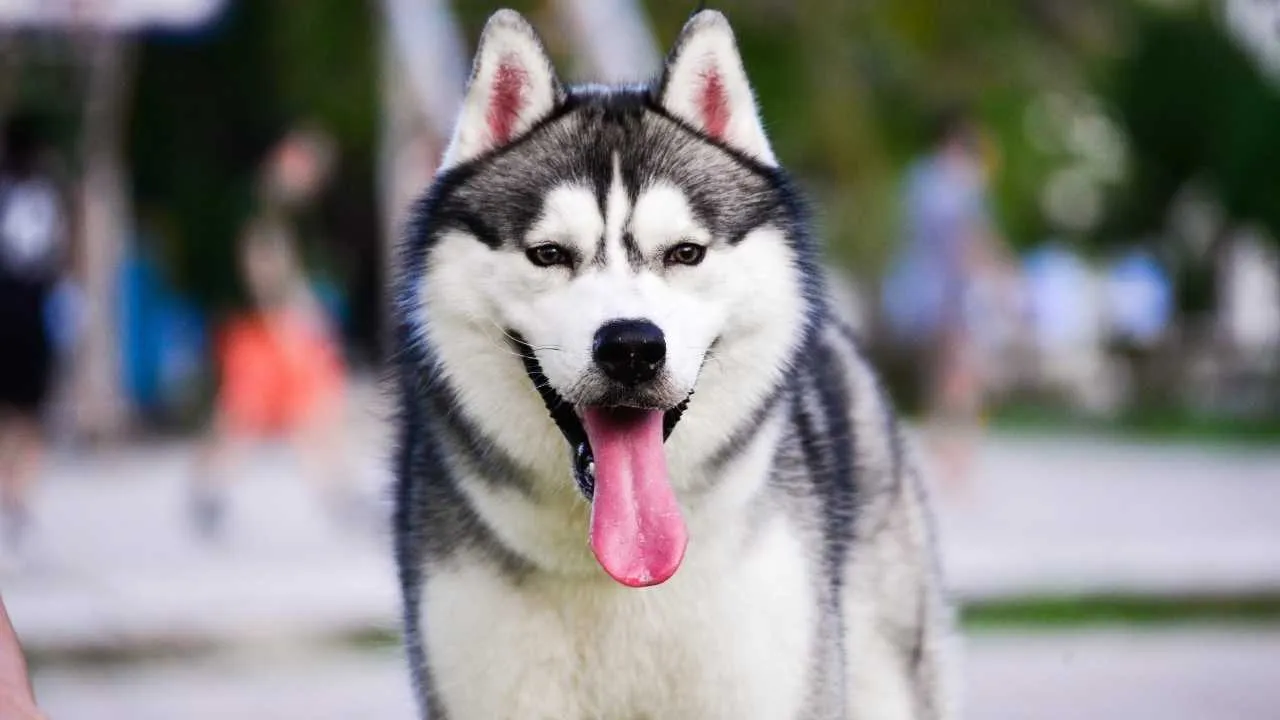
Ah, the Siberian Husky — nature’s reminder that not every dog is meant to be a couch potato. These majestic, blue-eyed snow wolves come with enough energy to power a small city and enough personality to keep you laughing and sighing in equal measure.
Originally bred to pull sleds across frozen tundras, Huskies are born adventurers. Their endurance is legendary, their zoomies are Olympic-level, and their opinions on following orders? Let’s just say they’re open to negotiation.
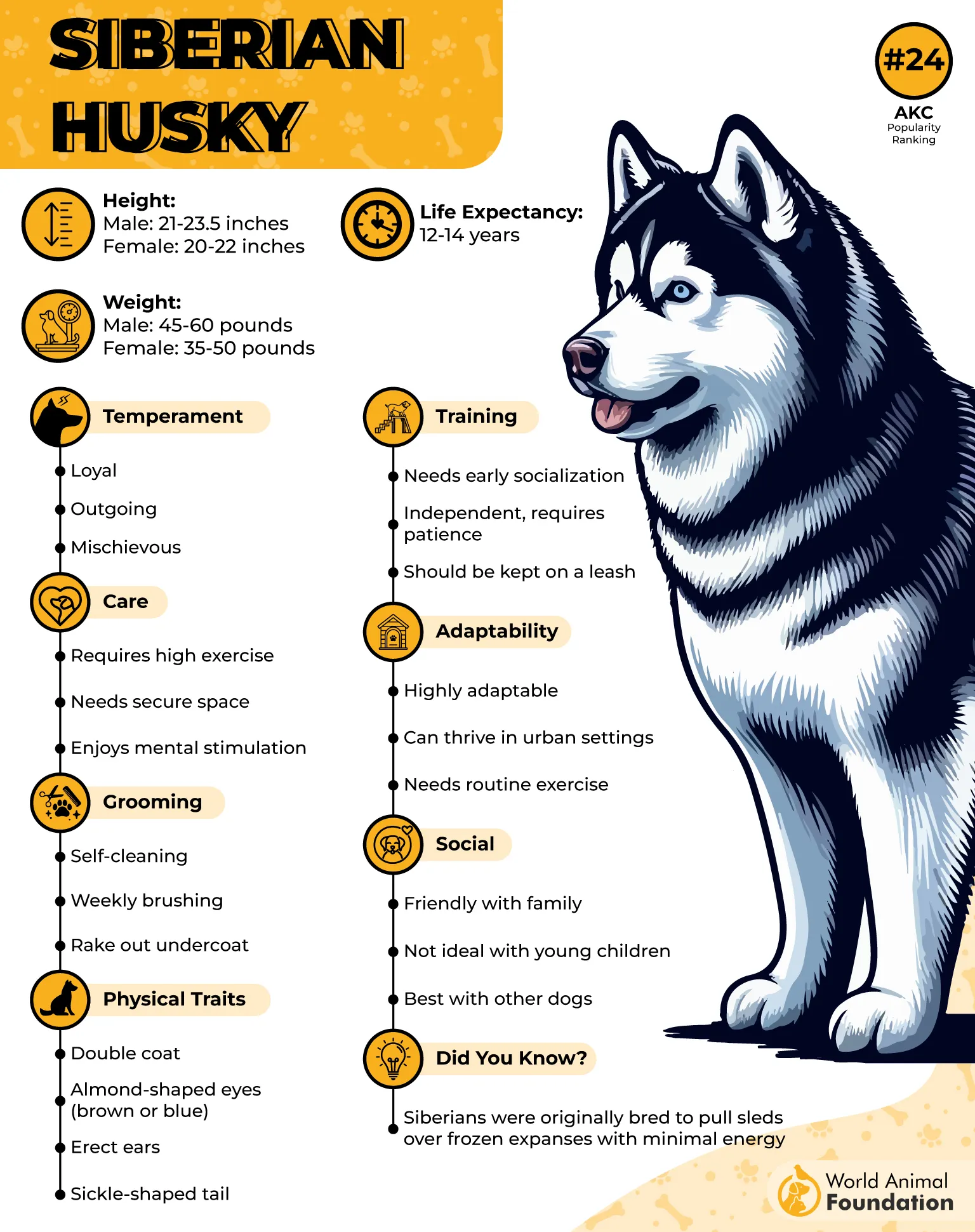
Huskies are fiercely loyal, loving, and protective, but they also have an independent streak the size of Alaska. And if you’re dreaming of an off-leash Husky staying close by your side… wake up. They’re known escape artists who consider fences more of a suggestion than a rule.
Energy overload: Think “living room parkour” before breakfast.
Selective hearing: Commands are optional in their book.
Escape artists: If there’s a way out, they’ll find it.
Training a Husky can feel less like obedience class and more like a diplomatic summit — one where your four-legged negotiator howls their counterarguments. As per WebMD, they’re also known for having a strong prey drive, so a child running and squealing could trigger their inner wolf mode — cue the chase!
Because of their high energy and playful roughhousing, they’re not always ideal for households with very young kids. A Husky might accidentally knock a toddler over in a burst of excitement — not out of aggression, but pure enthusiasm (and, let’s be honest, a little lack of spatial awareness).
3. Cane Corso
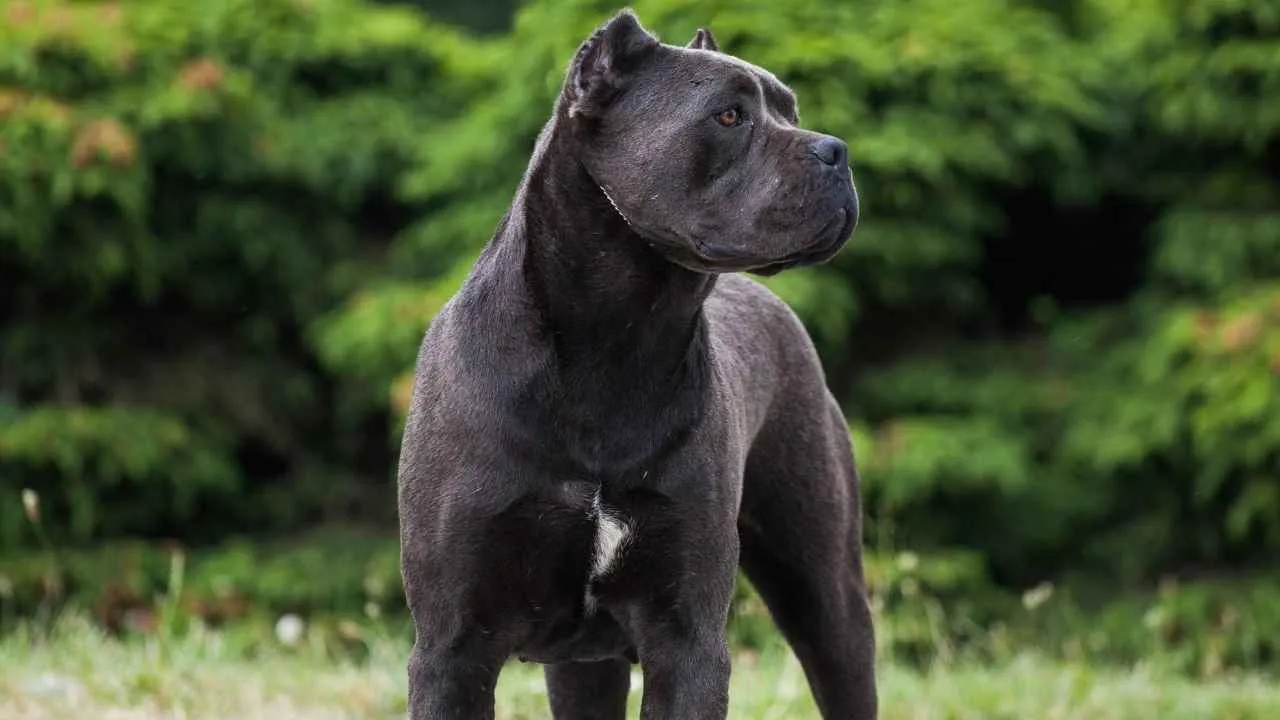
Ah, the Cane Corso — the dog that looks like it could guard a Roman fortress… because, well, its ancestors literally did. This Italian powerhouse is as majestic as it is muscular, exuding confidence, strength, and just the right amount of “don’t mess with me” energy.
This isn’t your average cuddle pup — the Cane Corso’s temperament is shaped by centuries of guarding and protecting. They’re not particularly trusting of strangers (think: “Who are you and why are you here?”) and don’t exactly roll out the welcome mat for other dogs.
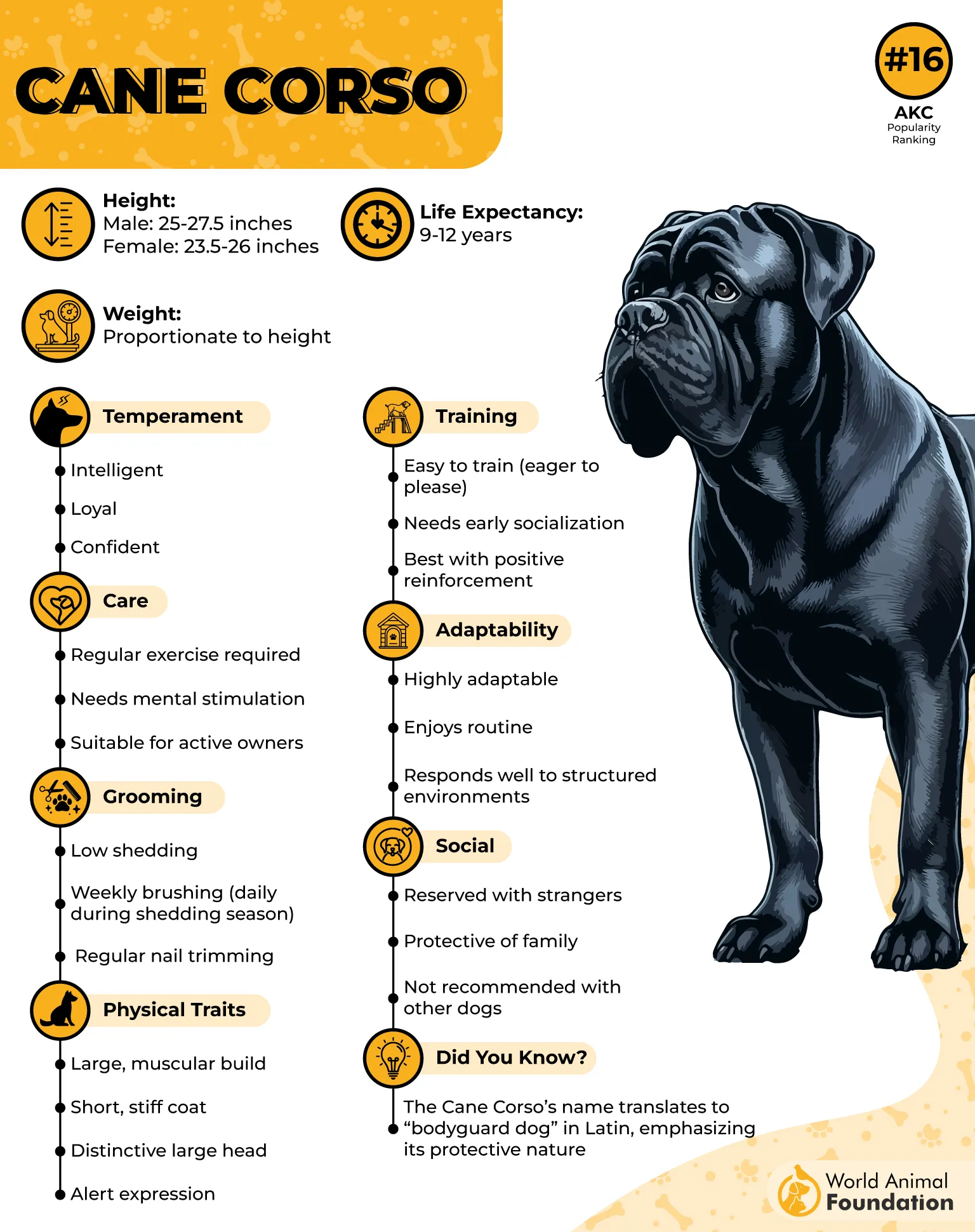
But when it comes to their family, they’re as loyal as they come — fiercely protective and surprisingly affectionate behind that tough exterior.
Incredibly stubborn and independent: They’ll respect you — if you’ve earned it.
Not a social butterfly: Strangers and other pets are met with suspicion.
Not a retriever: Playtime is more “patrol mode” than “fetch frenzy.”
Britannica says, this breed is not for the faint of heart — or for casual dog owners. The Cane Corso has power, determination, and a natural instinct to take charge. Without a confident, experienced owner who can provide structure and leadership, they might just decide they’re the new household CEO (and good luck telling them otherwise).
These giant dogs are also not big on doggy playdates. Especially with dogs of the same sex, things can go from calm to chaos if you’re not careful. Because of their size, strength, and serious demeanor, they’re not the best fit for families with small kids or elderly members.
It’s not that they’re aggressive — they just don’t always know their own power, and even a playful nudge could send someone flying like a bowling pin.
4. Chow Chow
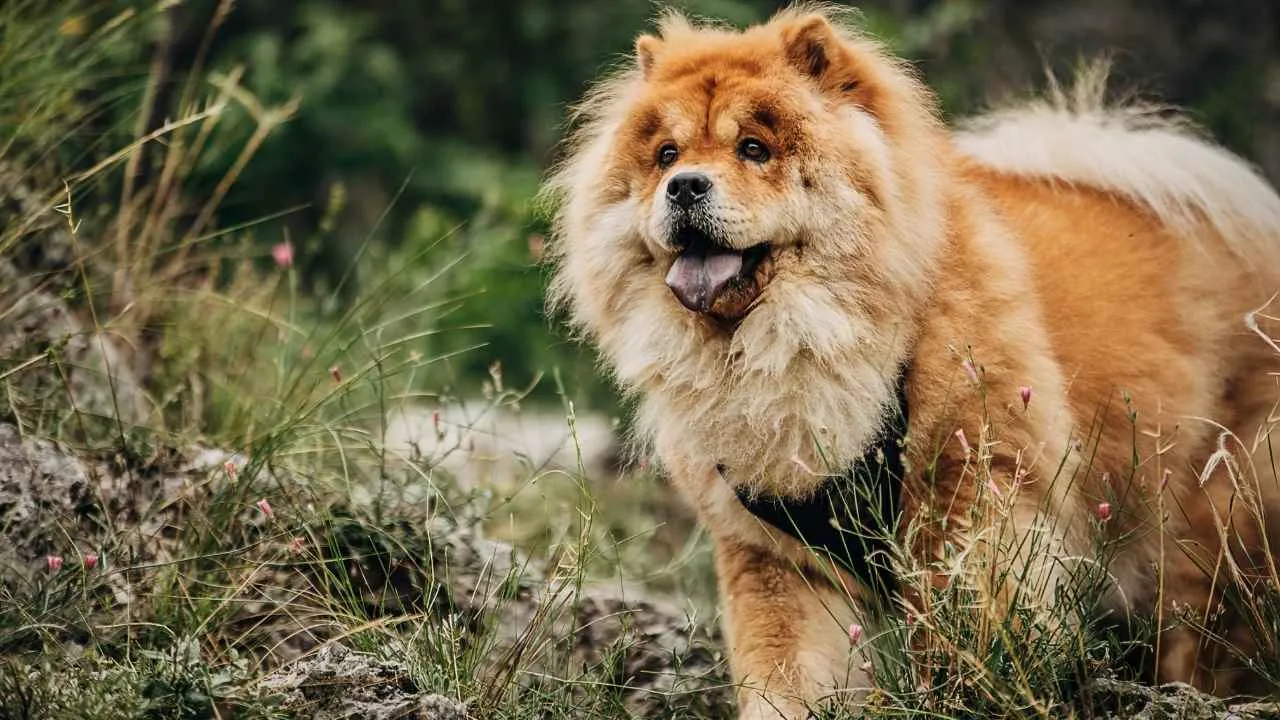
The Chow Chow is basically the cat of the dog world — stubborn streak, independent, proud, and convinced they’re slightly above everyone else in the room.
With that lion-like mane and an attitude to match, the Chow isn’t here to win your approval… but if you win theirs, congratulations — you’ve just earned a very exclusive membership.
According to Petplan, the strong-willed Chow can be quite the challenge to train. Think of it as negotiating with a furry royal — they’ll do what you ask, but only if they’ve decided it aligns with their personal agenda.
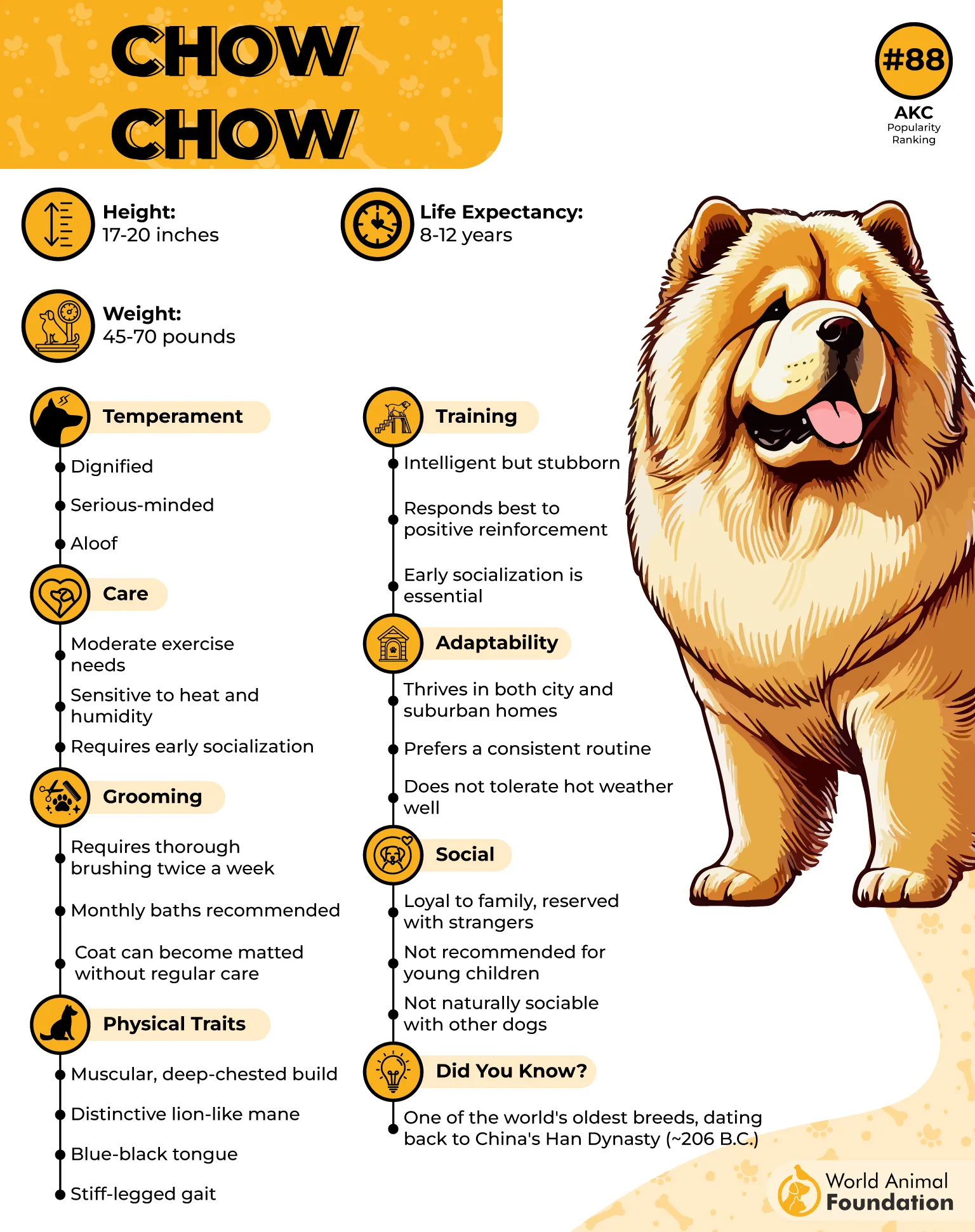
Chow Chows are affectionate, yes, but on their terms. They’re loyal and deeply bonded to their families but can develop separation anxiety if left alone too long — because while they may act aloof, deep down, they’re big softies who want their humans close.
Independent thinkers: They take orders… only if they feel like it.
Wary of strangers: Their trust circle is small and sacred.
Need patient training: Harsh methods will get you nowhere fast.
Exercise needs? Surprisingly modest for their size — around 40–60 minutes a day will keep them content. A couple of good walks and some off-leash play in a secure area are plenty. After that, they’re perfectly happy lounging regally in the sun, watching the world go by like a furry philosopher.
In the hands of a patient and confident owner, they can learn quickly — they just need to respect you first. Socialization is a lifelong mission for this breed. Without it, your Chow might treat strangers like uninvited guests at their private palace.
5. Doberman Pinscher
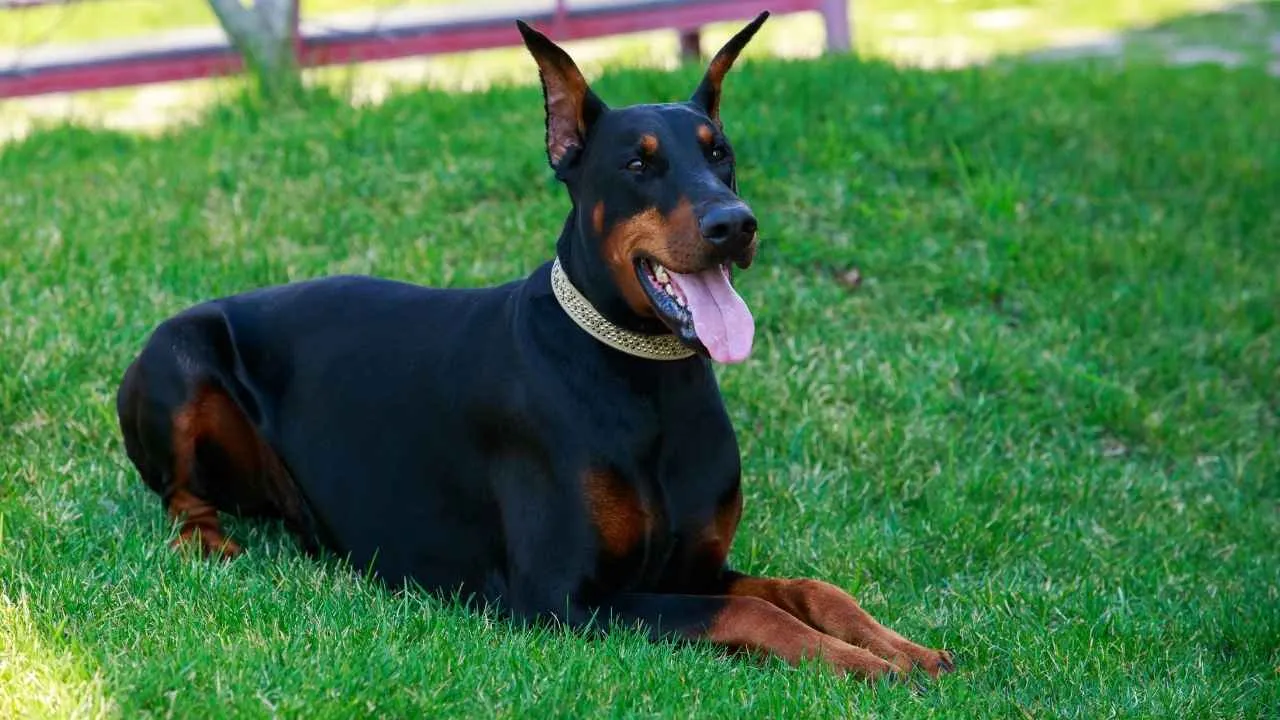
The Doberman Pinscher is like the James Bond of the dog world — sleek, intelligent, always alert, and ready to spring into action. With their muscular build and keen eyes, they don’t just enter a room — they scan it, assess the exits, and make sure everyone’s behaving.
Purina says Dobermans are fiercely loyal and affectionate with their families, often forming an especially deep bond with one person — their chosen human.
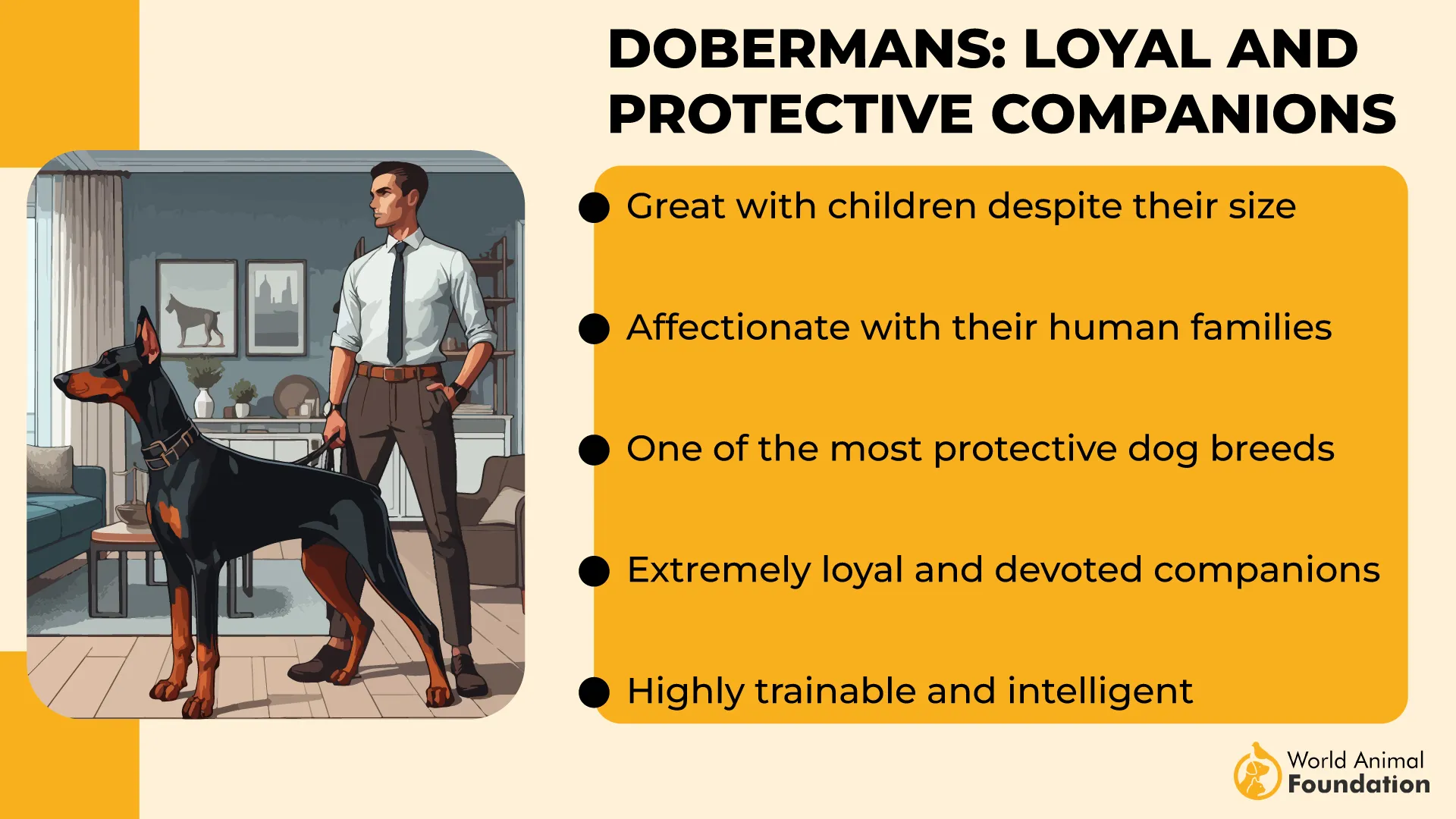
That means if you’re the lucky favorite, prepare for a permanent four-legged shadow. They’ll follow you from room to room, keeping a close eye on everything… including your snack choices.
But here’s the catch — a Doberman’s combination of strength, smarts, and energy can make them a handful for the unprepared. Without enough mental stimulation and physical activity, they’ll make their own fun — and “fun” might look like redecorating your living room with couch stuffing.
High energy + brains = chaos if bored
Suspicious of strangers: They take their bodyguard role very seriously
Needs structure: Without clear leadership, they’ll take charge themselves
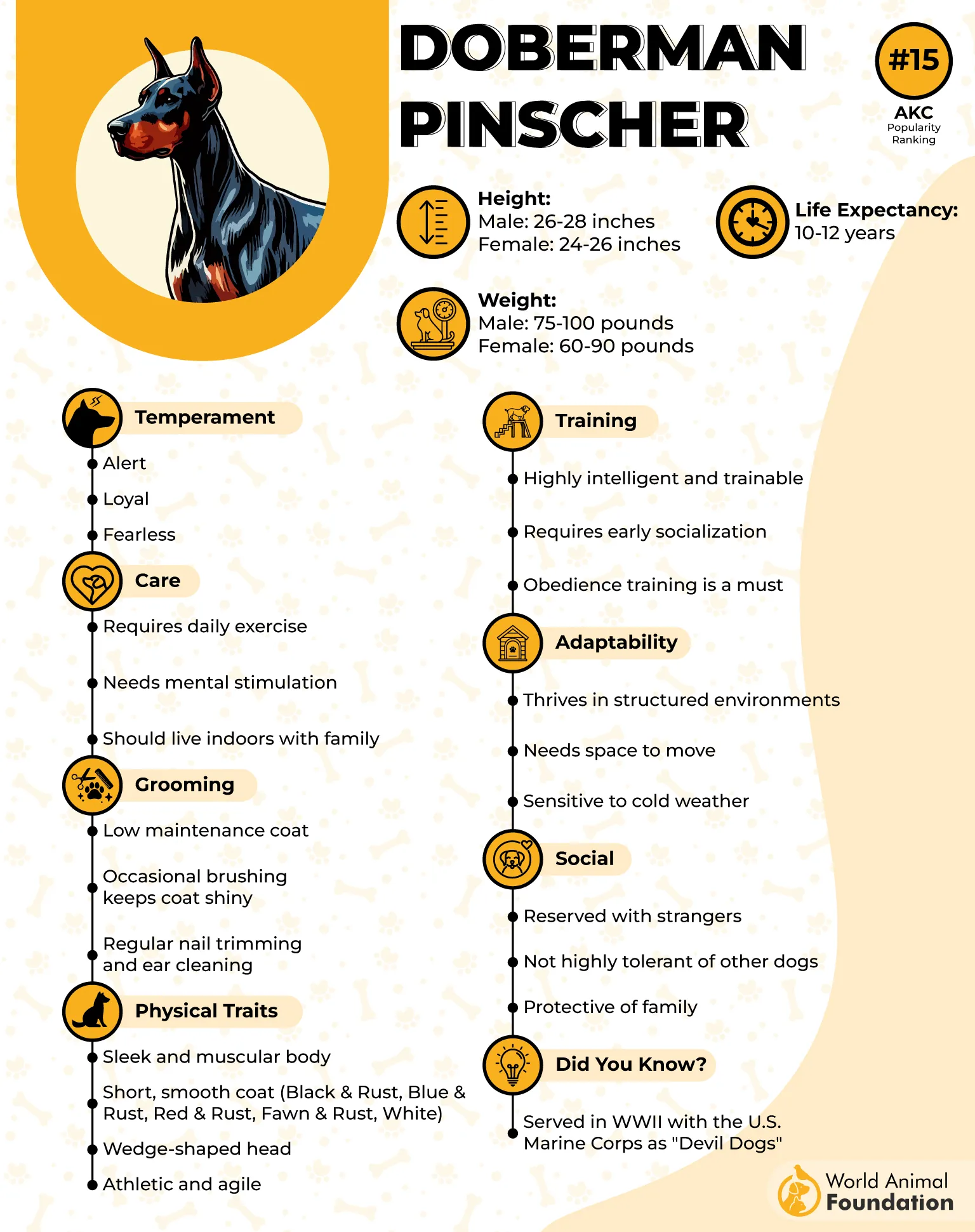
Early socialization and proper training are non-negotiable. They need to know who’s boss (hint: it should be you, not them). With structure, attention, and daily exercise, they can be wonderful companions — loving, protective, and endlessly loyal. companions.
Doberman is a powerhouse of loyalty and intelligence, wrapped in elegance and muscle. They’re not the type to nap through life — but if you can keep up, you’ll have one of the most devoted companions imaginable. Just don’t expect them to let the mailman off easy.
6. Akita

The Akita is like that stoic samurai of the dog world — noble, loyal, and always on high alert. They were bred in Japan to guard royalty and hunt big game, and let’s just say that “relax and let the guests in” was not part of their original job description.
These dogs are fiercely protective and deeply devoted to their families, which is both their greatest strength… and their biggest challenge when it comes to indoor life.
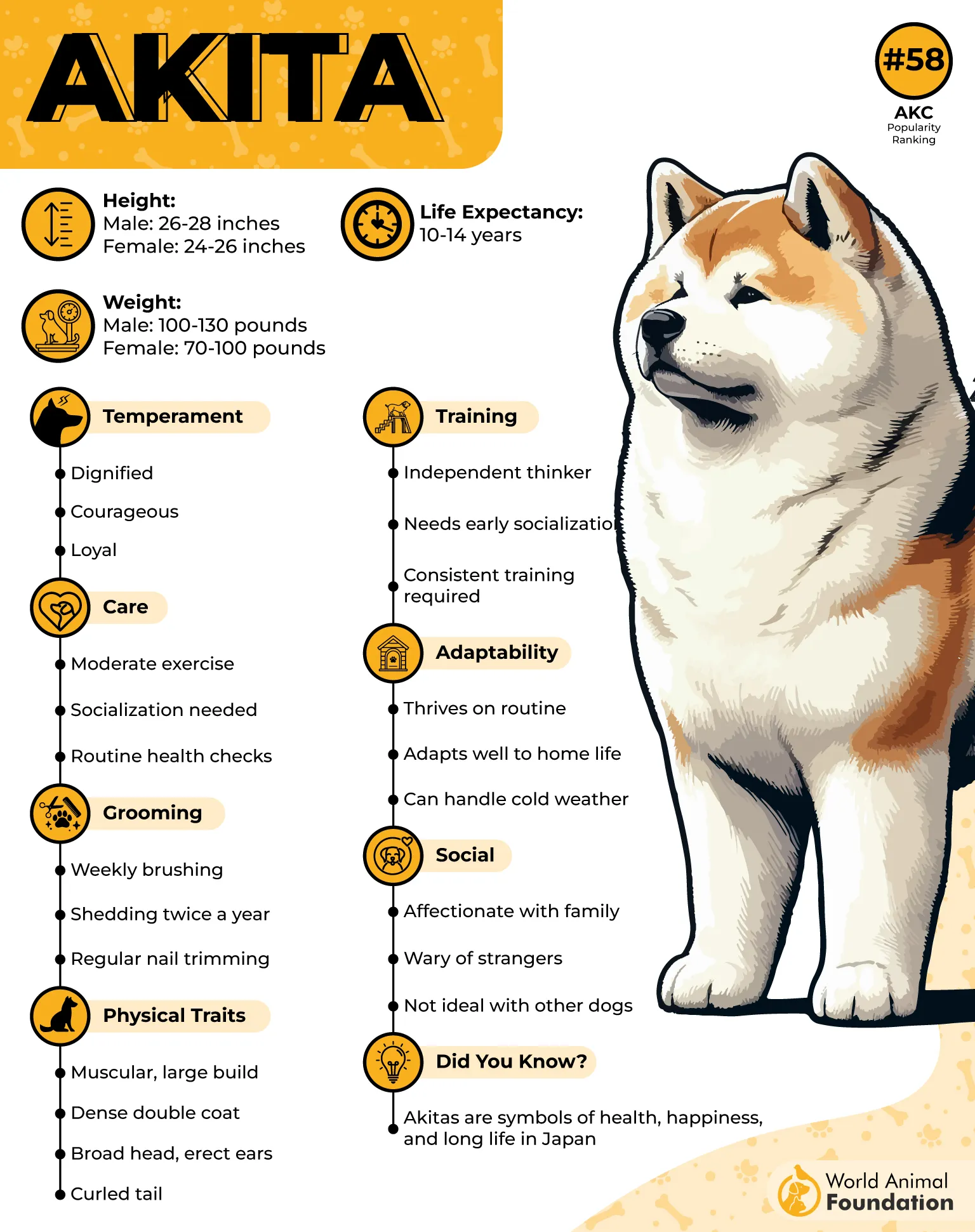
Akitas tend to see the world in very black-and-white terms: family = safe, stranger = suspicious. So when your kid’s friends come over screaming, laughing, and tumbling through the living room, your Akita might think it’s time to step in as security detail. It’s not aggression so much as instinct — they simply don’t want anyone messing with their pack.
Suspicious of strangers: Not ideal for a revolving door of visitors or noisy playdates.
Independent thinkers: They’ll follow your rules… as long as they agree with them.
Loyal to the core: Once they love you, they’ll guard you with their life (and maybe your snacks, too).
That said, under all that stoic confidence lies a dog that loves its people deeply. They’ll curl up by your side, shadow you from room to room, and give you a look that says, “I’ve got you, human.”
But for all their devotion, Akitas need consistent training, early socialization, and firm boundaries. If you want a guardian with a big heart and a serious sense of duty, this is your noble knight in fur armor.
7. Rottweiler
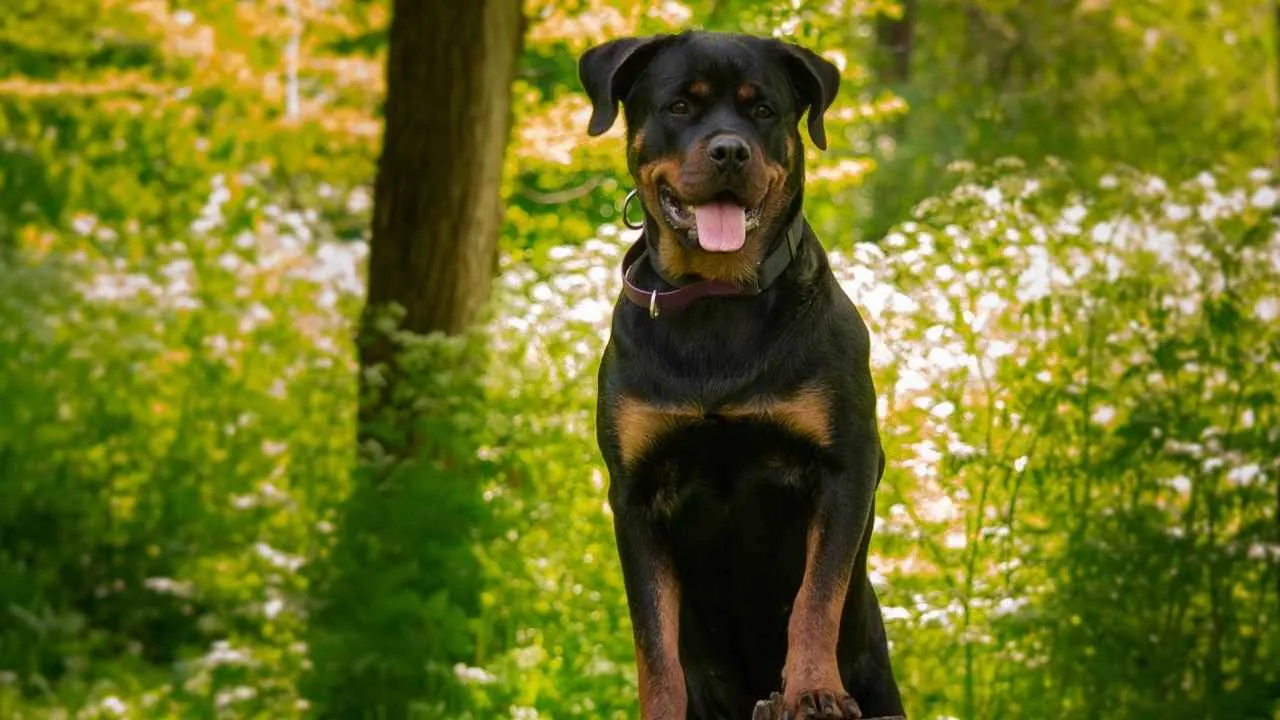
Rottweiler — equal parts bouncer, bodyguard, and misunderstood cuddly teddy bear. These dogs are known for their confidence and strength, and let’s be honest, if they could talk, they’d probably sound like a drill sergeant with a heart of gold.
Despite their intimidating look, Rottweilers can be incredibly loving family members… as long as they know who’s in charge (and it’s not them). Rottweilers are brilliantly alert and naturally protective, which makes them excellent guard dogs but sometimes tricky indoor companions.
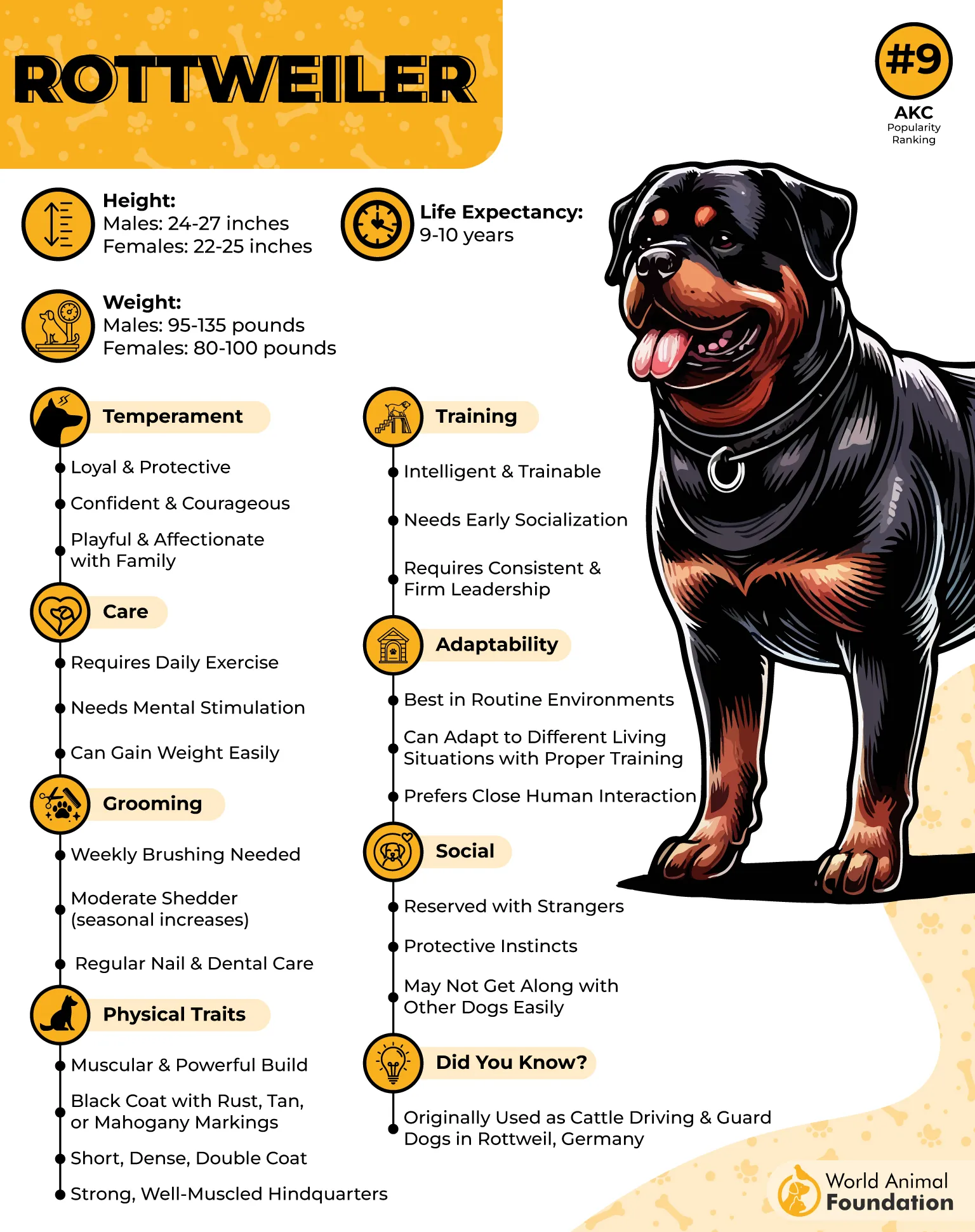
They take their job of “home security” a little too seriously — whether it’s the mail carrier, the neighbor’s cat, or your kid running across the living room. To a Rottie, it all looks suspicious until proven otherwise.
Too protective for their own good: They might think tag is a home invasion.
Strong-willed and powerful: Needs a confident leader to keep things balanced.
Highly intelligent dog: Can outthink you if you’re not careful.
Their intelligence means they pick up on training quickly, but if you slack off, they’ll start making executive decisions — and trust us, you don’t want your Rottweiler deciding who’s allowed in the house.
With firm, consistent guidance and plenty of mental and physical stimulation, though, they can be calm, obedient, and downright cuddly.
Conclusion
While some of the worst-behaved indoor dog breeds—like Beagles, Australian Cattle Dogs, Border Collies, and Alaskan Malamutes—can be stubborn or even a bit destructive, their behavior often stems from a lack of mental stimulation, enough exercise, or proper training at a young age. These pups are incredibly smart and energetic, with a strong sense of purpose and powerful protective instincts that once helped them chase large game or work over long distances.
Whether they have a double coat or a short coat, each breed’s temperament requires patience, structure, and sometimes extensive training to bring out good behavior. Responsible pet parents who choose reputable breeders, prioritize their dog’s mental health, and understand that stubbornness is often not a flaw—but a strong suit—will find these dogs to be amazing companions. Most dogs, regardless of breed, deserve the chance to learn, bark, play, and thrive in a loving home that values their unique nature.


